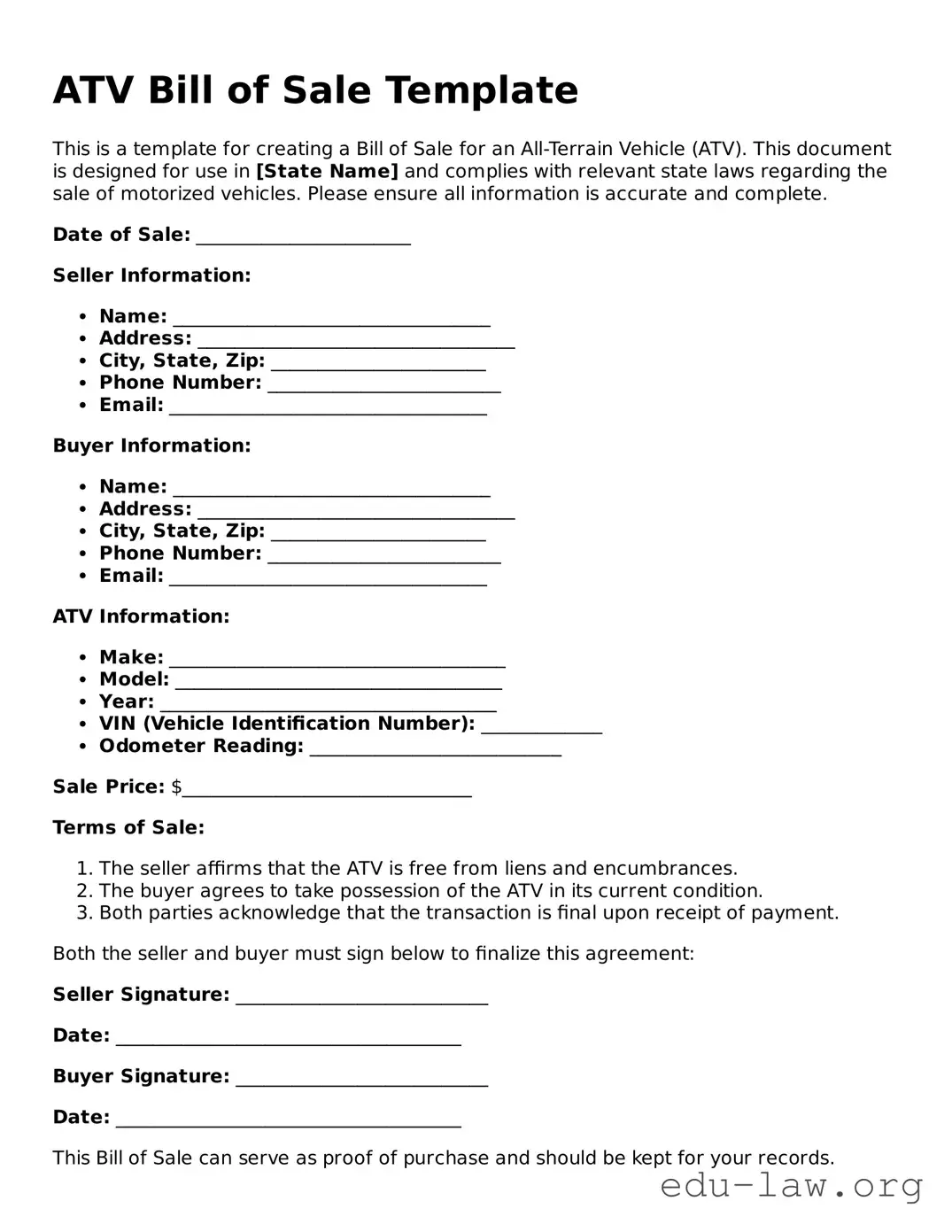An ATV Bill of Sale is a legal document that serves as proof of the sale and transfer of ownership of an all-terrain vehicle (ATV) from one party to another. It outlines vital information such as the buyer and seller’s names, the vehicle's identification details, the sale price, and any conditions of the sale. This document is essential for both the seller, to confirm the transaction, and the buyer, to prove ownership.
What information should be included in the ATV Bill of Sale?
The document should include the following information: the full names and addresses of both the seller and the buyer, the ATV's make, model, year, Vehicle Identification Number (VIN), mileage, sale price, and the date of the sale. It's also wise to include any warranties or conditions attached to the sale, along with signatures of both parties, to validate the transaction.
Is an ATV Bill of Sale legally binding?
Yes, an ATV Bill of Sale is a legally binding document. Once both parties sign it, they are agreeing to the terms outlined within. It can be enforced in a court of law should either party fail to uphold their end of the agreement. However, it is crucial that the form is accurately completed and signed; otherwise, its enforceability may be challenged.
Do I need to have the ATV Bill of Sale notarized?
Generally, notarization is not required for an ATV Bill of Sale; however, some states or specific situations may benefit from it. Notarizing the document adds an extra layer of authenticity, confirming that the signatures are valid and that both parties willingly entered into the agreement. It’s advisable to check your state laws to confirm the requirements.
Can I create my own ATV Bill of Sale?
You can indeed create your own ATV Bill of Sale. Several templates are available online that you can customize. Ensure that the form you create includes all necessary information and adheres to your state’s specific requirements. Alternatively, using a standard template can simplify the process and minimize the risk of omitting crucial details.
Where do I keep my ATV Bill of Sale?
Once the ATV Bill of Sale has been completed and signed, both the buyer and seller should keep their copies in a safe place. Since it serves as important proof of ownership, it’s wise to maintain records in a location that’s easily accessible, like a filing cabinet or a digital backup, to ensure you can present it if necessary.
What should I do if I lose my ATV Bill of Sale?
If the original ATV Bill of Sale is lost, the first step is to contact the other party involved in the transaction to see if they saved their copy. It may be possible to draft a new Bill of Sale if both parties agree on the transaction details. This new document should clearly state that it supersedes any previous versions to avoid confusion. If necessary, consult with local authorities for additional steps, especially if you are facing issues related to ownership or registration.
Can I use an ATV Bill of Sale for other types of vehicles?
An ATV Bill of Sale is specifically designed for all-terrain vehicles; however, the general structure can be adapted for use with other types of vehicles, such as motorcycles or boats. It’s essential to ensure each form is tailored with the pertinent details that correspond to the specific type of vehicle involved in the sale. Always check your local regulations to confirm that you’re using the correct document for your needs.
